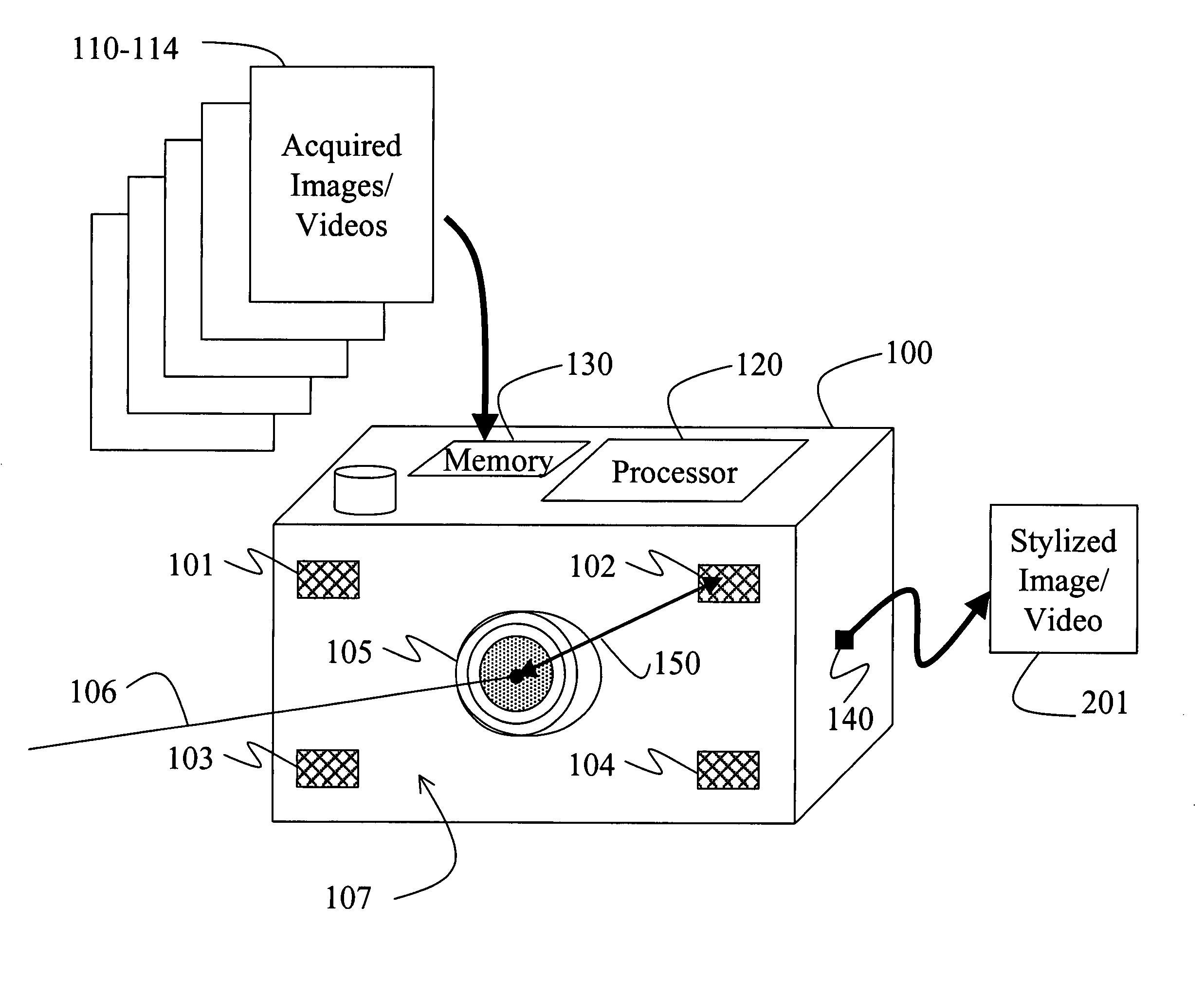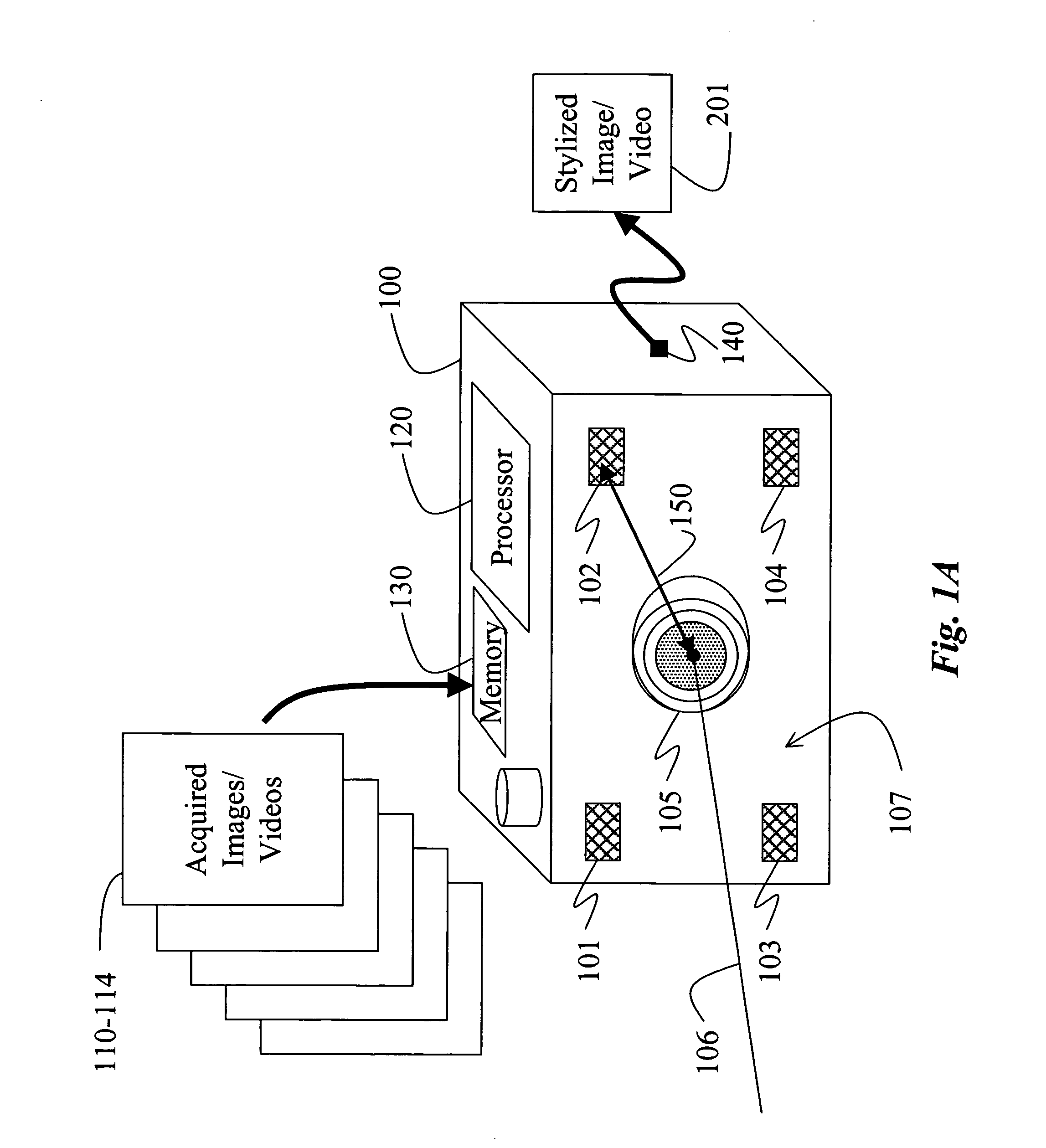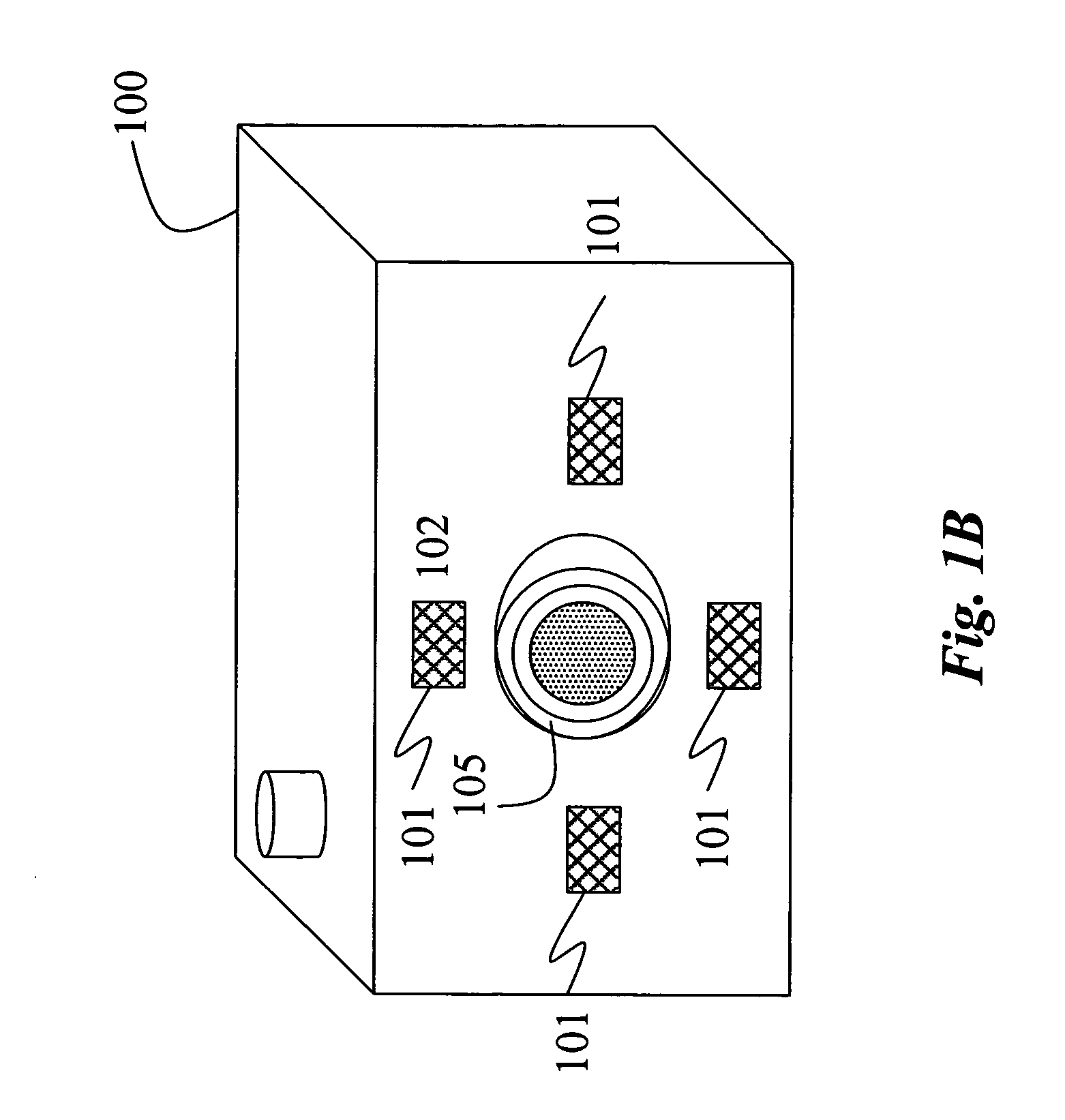Stylized rendering using a multi-flash camera
a multi-flash camera and flash technology, applied in the field of styling rendering using a multi-flash camera, can solve the problems of a traditional stereo technique, a stereo technique that is difficult to achieve, and a single image value change is often used
- Summary
- Abstract
- Description
- Claims
- Application Information
AI Technical Summary
Benefits of technology
Problems solved by technology
Method used
Image
Examples
Embodiment Construction
[0117] Our method for generating a stylized image of a scene includes the following steps. First, acquire a set of images of the scene under shifted light caused by multiple flash units positioned around the lens of a camera, and ambient lighting. These images are processed to automatically detect features, such as depth edges, intensity edges, and texture edges to determine qualitative depth relationships among the features. An output image is a combination of the acquired images, in which detected features are enhanced according to the detected features and the qualitative relationships to provide a stylized image.
[0118] We use the term depth edges to refer to those with edges with a C0 depth discontinuity. Depth edges correspond to internal or external occluding contours, or silhouettes, for smooth surfaces, boundaries of thin objects , i.e., a leaf or a sheet of paper, or view-independent edge objects, e.g., a cube.
[0119] The recovered depth edges are signed. In a local neighbor...
PUM
 Login to View More
Login to View More Abstract
Description
Claims
Application Information
 Login to View More
Login to View More - R&D
- Intellectual Property
- Life Sciences
- Materials
- Tech Scout
- Unparalleled Data Quality
- Higher Quality Content
- 60% Fewer Hallucinations
Browse by: Latest US Patents, China's latest patents, Technical Efficacy Thesaurus, Application Domain, Technology Topic, Popular Technical Reports.
© 2025 PatSnap. All rights reserved.Legal|Privacy policy|Modern Slavery Act Transparency Statement|Sitemap|About US| Contact US: help@patsnap.com



